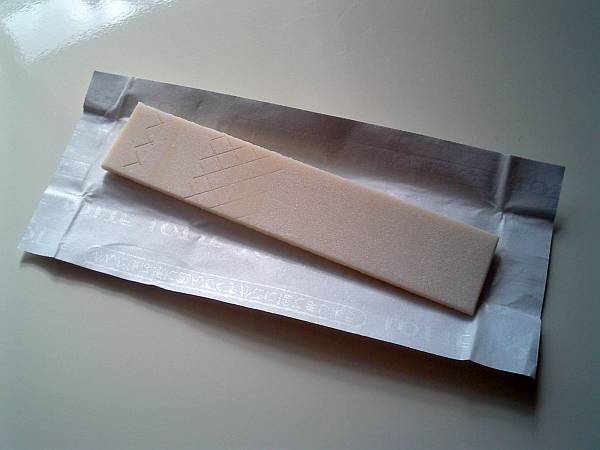
Chewing gum and eating candy may be really unhealthy for your digestive system.
A common food additive called titanium dioxide found in gum, candy and many other foods has been found to disrupt small intestine cells. The ability of these cells to absorb nutrients and act as a barrier to pathogens significantly decreased after exposure to nanoparticles of titanium dioxide.
The study was done by researchers at Binghamton University, State University of New York and published in the journal NanoImpact.
The researchers used small intestine cells in culture. These cells were exposed to the equivalent of a meal’s worth of titanium dioxide nanoparticles for four hours (short term exposure called acute exposure) and the equivalent of three meal’s worth over five days (long term exposure called chronic exposure).
Harmful Effects After Long Term Exposure
They found not much effect from the acute expoure. However, chronic exposure diminished the ability of the microvilli on the small intestine cells to absorb nutrients. Microvilli are numerous, tiny projections on small intestine cells that absorb nutrients as they pass through your digestive system.
Because chronic exposure to titanium dioxide interfered with the microvilli, the intestinal barrier was also weakened. Thus, the barrier’s ability to block pathogens significantly decreased also.
“Titanium oxide is a common food additive and people have been eating a lot of it for a long time — don’t worry, it won’t kill you! — but we were interested in some of the subtle effects, and we think people should know about them,” the researchers said.
Titanium dioxide is actually approved by the U.S. Food and Drug Administration. However, it’s hard to avoid ingestion the substance.
For example, titanium dioxide is used in toothpaste for its abrasive property. It’s used in some chocolate to give it a smooth texture, and in donuts to give the donuts their colors. It’s even used in skimmed milks to make it look more opaque.
Found in Gum, Candy and Process Foods
Other common foods titanium dioxide is found in include gum, candy, and mayonnaise.
“To avoid foods rich in titanium oxide nanoparticles you should avoid processed foods, and especially candy. That is where you see a lot of nanoparticles,” the researchers said.
If you can help it, try to avoid gum, candy and processed food so you don’t ingest titanium oxide nanoparticles. These nanoparticles can really mess up your small intestine cells.
Journal Reference:
Zhongyuan Guo, Nicole J. Martucci, Fabiola Moreno-Olivas, Elad Tako, Gretchen J. Mahler. Titanium dioxide nanoparticle ingestion alters nutrient absorption in an in vitro model of the small intestine. NanoImpact, 2017; 5: 70. http://dx.doi.org/10.1016/j.impact.2017.01.002


